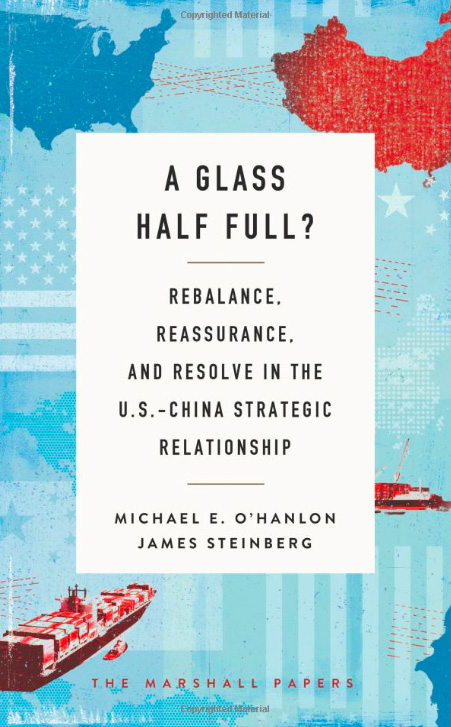Ruta de navegación
Menú de navegación
Blogs
Entries with label us-china .
[Michael E. O'Hanlon and James Steinberg, A Glass Half Full?: Rebalance, Reassurance, and Resolve in the US-China Strategic Relationship. The Brookings Institution Press, Washington D.C., 2017, 104 pages]
REVIEW / María Granados
This short book follows a longer book published in 2014 by the same authors, Strategic Reassurance and Resolve. In the new publication, Michael E. O'Hanlon and James Steinberg —both academics and senior policy makers— update and review the policies they suggest in order to improve the relations between China and the United States. The relationship between both countries, established in the early 1970s, has been subject to changing times, and it has suffered several crises, but it has nonetheless grown in importance in the international sphere.
The short and straight-forward strategic review of the ongoing action provides an insight into the arsenals and plans of the two powers. Moreover, through graphs and numerical tables, it depicts the current situation in terms of strength, potential threat, and the likelihood of destruction if a conflict was to arise.
It also gives an overview of the diverse security matters that need to be monitored carefully, in the realms of space, cybernetics, and nuclear proliferation. These essential matters need not to be disregarded when planning defense strategies; instead officials should cast an eye over historical tensions such as Taiwan, North Korea and the South China Sea, and remember to use the tools that have already been established in the region to prevent the use of hard power, i.e.: ASEAN (The Association of Southeast Asian Nations).
 |
Not only does the paper carefully consider the action taken by President Obama and his predecessors, but also cautiously suggests steps ahead in the path opened by Nixon four decades ago. O'Hanlon and Steinberg use bulletpoints to give directions for further developments in the Sino-American relationship, stressing the need for transparency, mutually beneficial exchanges, cooperation, and common ends in common projects.
Some of the ideas are summarised briefly in the following paragraphs:
–True rebalance moves away from mere 'containment' and into a trustworthy alliance. Joint operations that ensure cooperation and reassurance are a key aspect of that objective.
–Confidence building in the area of communications must be reinforced in order to prevent espionage and the spread of piracy, as well as other illegal tactics to gather private information.
–The neutral trend in the broad topic of space, cybernetics and nuclearisation has to advance into a firm and close cooperation, especially in view of the threat that the Democratic People's Republic of Korea poses to the global community as a whole. Intelligence and the recent accusations of Russia's manipulation through the use of the Internet and other technological means can be a target to pursue further negotiations and the signing of international treaties such as The Budapest Memorandum on Security Assurances.
–To abstain from any risks of escalation, the following policies must be regarded: the leveling of military budget growth, and of the development and deployment of prompt- attack capabilities, restraining modernisation, in favour of dialogue and the exchange of information, providing notice of any operation.
The authors conclude that the relationship is not free from conflict or misunderstanding; it is indeed a work in progress. However, they are positive about that progress. The overall outlook of the Sino-American relation is, as the title suggests "A Glass Half Full": there is of course work to be done, and the path has plenty of potential problems that both countries will have to face and resolve in the least damaging way to advance on the common interest; in spite of the aforementioned, half of it has already been done: both China and the US have a goal to fight for: the prevention of war, which would be short and detrimental for all international actors alike.
